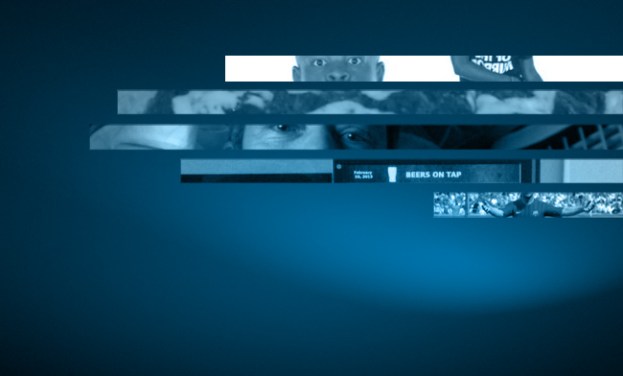

I’m not what you would call a dancer. My fumbled writhing on the booty-shake floors of my past illustrates perfectly my blindness to the groove. The head, the arms, the hips, the legs – whatever neurons connect these parts of my body are apparently rendered deaf to one another the moment music plays over the speakers. I am, in other words, a regular white guy. So I completely understand the recent “Harlem Shake” craze sweeping the dorm rooms and offices of our nation. It’s a funny, if not clever, way for my fellow non-boogie-ers to feel like part of the dancing world. Plus, the videos are all mercifully short, at just 30 seconds.
This is the kind of ingenuity the Internet is based on – quick bursts of humanity, preferably as silly as possible.
Unfortunately, the whole Harlem Shake meme is a lie. Contrary to what you may have learned from watching these so-called Harlem Shake videos, the actual Harlem Shake has nothing to do with wearing a motorcycle helmet. Nor does it involve humping anything (at least not inherently). The true Harlem Shake – a dance move that has been around for something edging on millennia, or so I’m told – takes skill beyond the willingness to look like a jackass. It takes coordination, finesse, soul. It takes rhythm. In short: It takes being able to dance. You know, like this guy (below). Watch and learn, youngsters.

For $36, you can have a custom-made, beautifully drawn pizza pie delivered straight to your door. Is this food, or a piece of personalized art? Whatever you choose to think of it, Paint Your Pizza is exactly what it sounds like. Through an online app that resembles the pre-Cambrian Windows Paint, customers can draw whatever they want on their pizza before a team recreates the photo onto a pie. This a new way of reimagining pizza crust as an art canvas was thought up by Swedish-born artist Jonas Lund who long yearned for affordable, quality art. I don’t know about quality, since it does depend on the pizza maker to be good at recreating the details, but I’d be lying if I said I wasn’t impressed by Teenage Mutant Ninja Turtle pie. We’ll take 12!

Most of us can only fantasize about what it’s like to live in outer space, and those dreams usually involve time travel, lasers, and aliens who just happened to have mastered the English language (thanks, “Star Trek!”). For a dose of reality check and experience what it’s really like to live beyond Earth’s surface, channel the astronauts aboard the International Space Station. How? With Twitter, of course, duh!
The extraterrestrial feed to follow comes from Canadian astronaut Chris Hadfield, who seems to be having quite a bit of fun up on the ISS tweeting back-and-forth with William Shatner and posting recordings from space. (We’re pretty sure he is also doing other serious spacey-type work.) But the real reason to follow Hadfield is for the daily photos he tweets. His various images of Earth’s topography are not only stunning to look at, but Hadfield includes brief descriptions for each so you don’t have to guess too hard what that strange-looking blob in the Atlantic Ocean is.


The $35 credit-card-sized Raspberry Pi computer has been all the rage since it was first released in February of last year. As of a month ago, it had come close to selling one million units. Built with schools in mind, the inexpensive and bare-bones computer was made to encourage students to learn computing and programming skills at an early age. But it’s not just school children that are tinkering with the Raspberry Pi. According to a story from Wired, a “hobbyist beer maker who goes by the name ‘SchrodingersDrunk’” has designed a digital tap display to help him and his roommate keep track of what the home brewers have on tap.
Schrodinger, who studied English in college and barely had any experience with electronics or software, was able to “cobble together enough code” to create a working beer board, proving that the Raspberry Pi is simple enough for any determined (and perhaps slightly buzzed) person to use. For those who want to build their own tap lists or build upon his work, Schrodinger offers his code up on GitHub. His creation just goes to show that computer programming can be cool, especially when it’s used for beer-related purposes.


While debates over video-game violence continue to rage over blood-soaked first-person shooters, what happens when a game simply sets an example of poor sportsmanship? Apparently, it still gets some soccer shorts in a knot.
The Chairman of the Dutch Football Association (KNVB) Michael van Praag announced this week that action would be taken against EA Sports’ popular FIFA franchise, after parents asked the Dutch FA to ban protesting players from the game. Apparently, parents are upset that these virtual players can be seen reacting aggressively and berating officials. The parents argue that these virtual depictions set a bad example for children, and worry that they will influence children into thinking this behavior “normal.”
Van Praag reacted to the complaints by bringing them to the FIFA Associations Committee. “They will deal with it,” he said on Twitter.
But should the request really be taken seriously? Like any other sport, soccer is one where passions raise, tempers flare, and occasional head-butts are thrown. But stripping a game of one of its most emotional depictions seems silly, even during a time where video-game violence and issues regarding gun control are spuriously thrown together by politicians and public figures.
As an avid soccer fan and gamer, I disagree with censorship in gaming as whole, and believe that the very real concerns troubling society have little correlation with gaming. Van Praag’s reaction shows we have a long way to go before society understands that good parenting isn’t done by simply shielding children from objectionable content.




